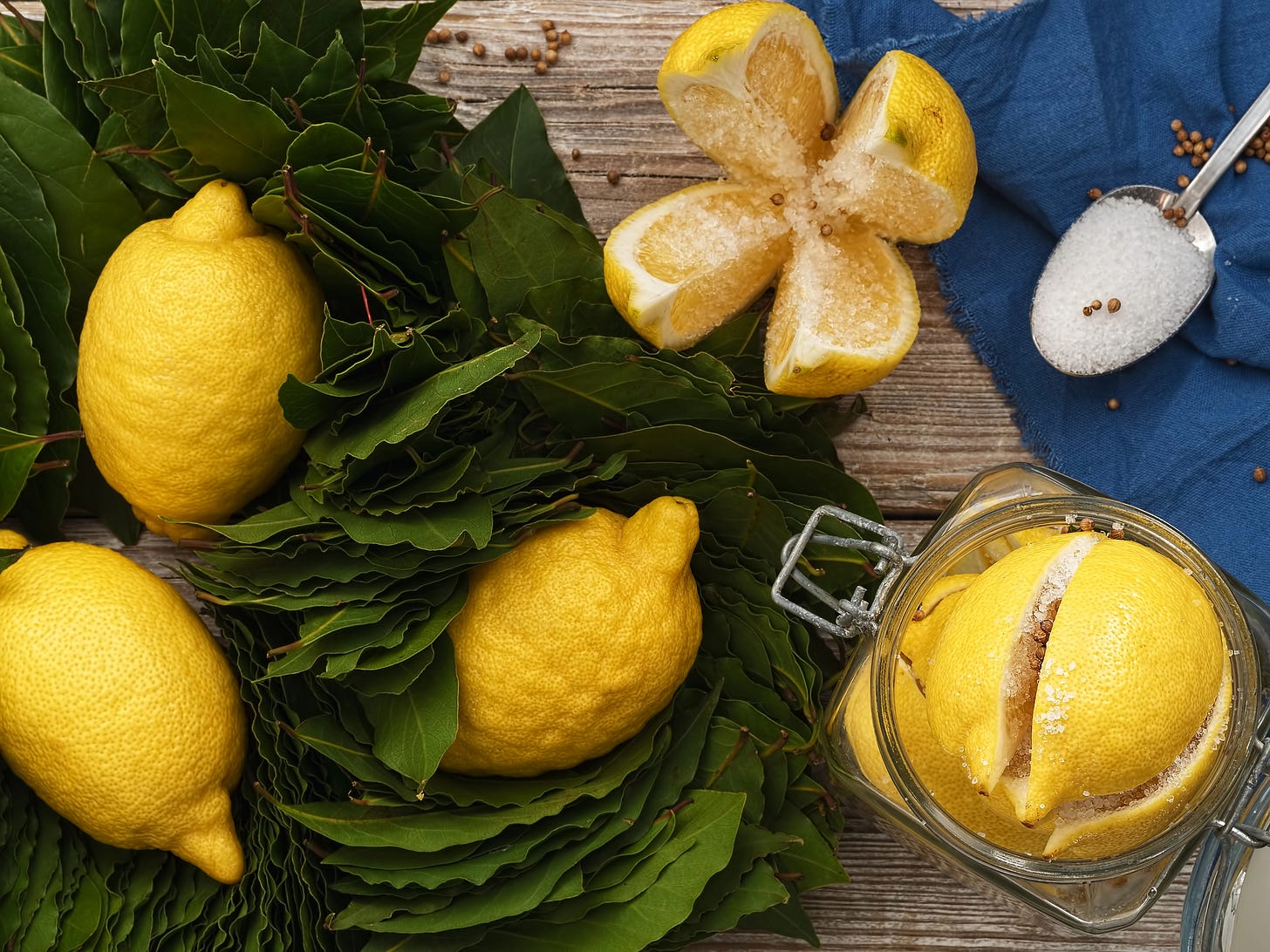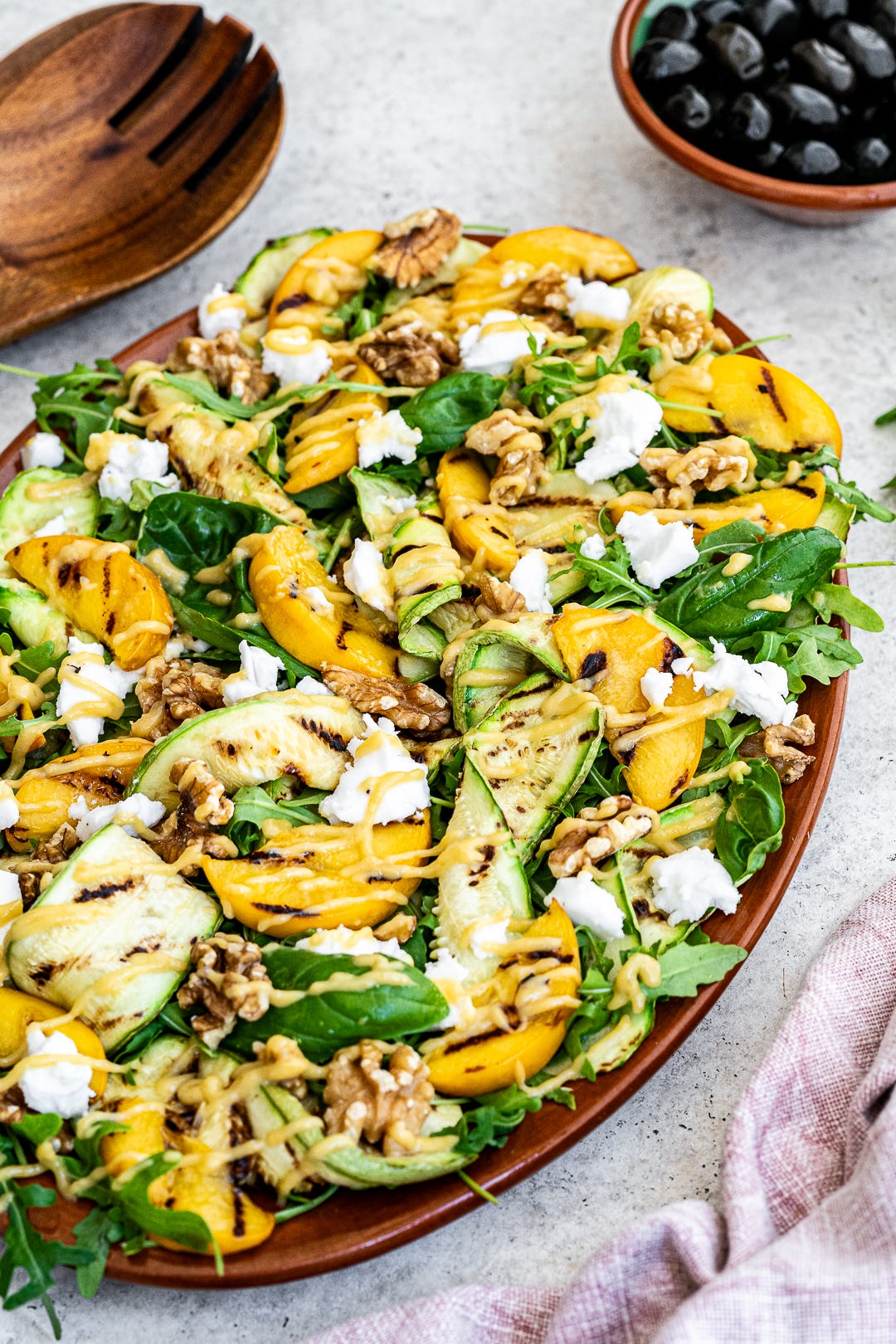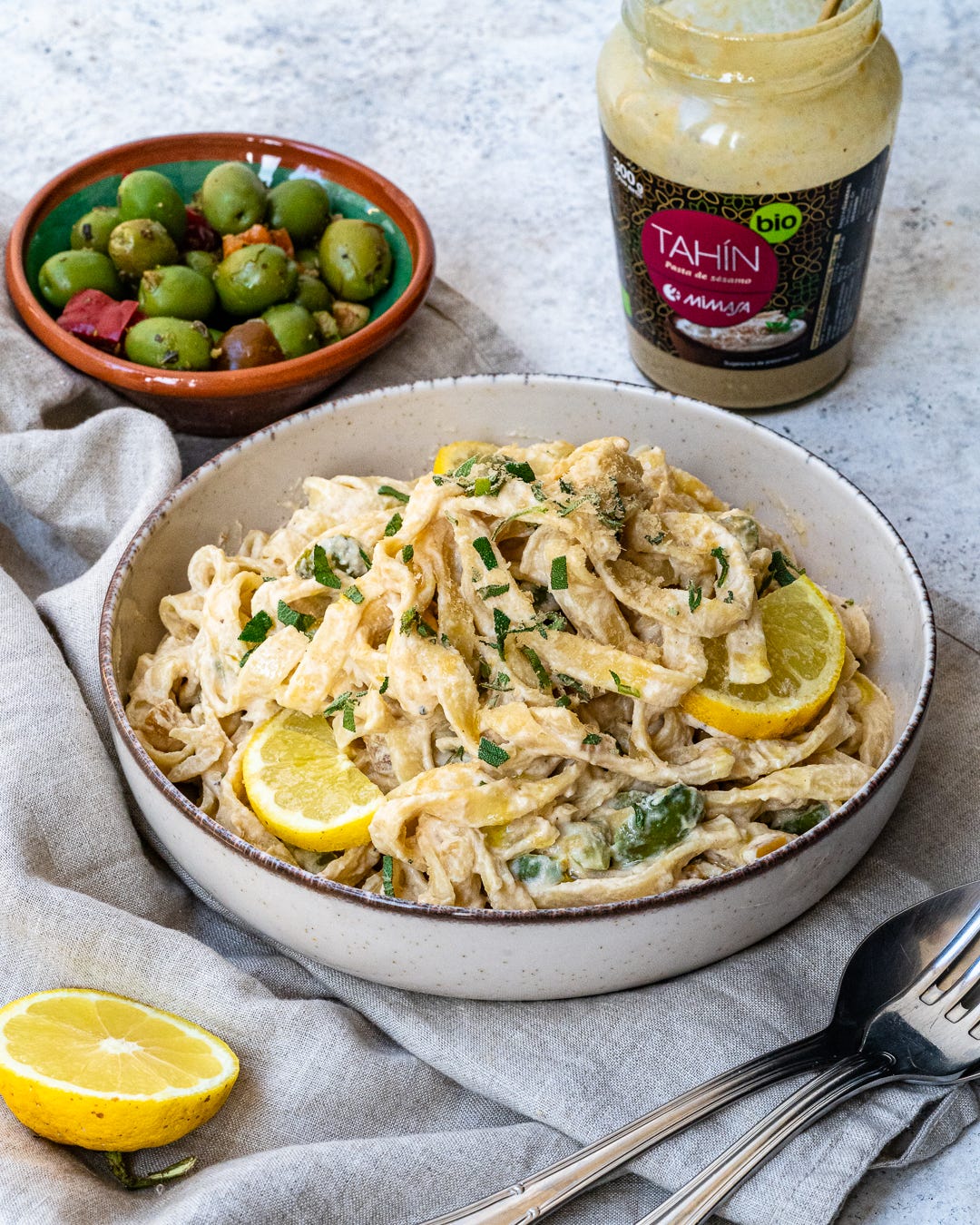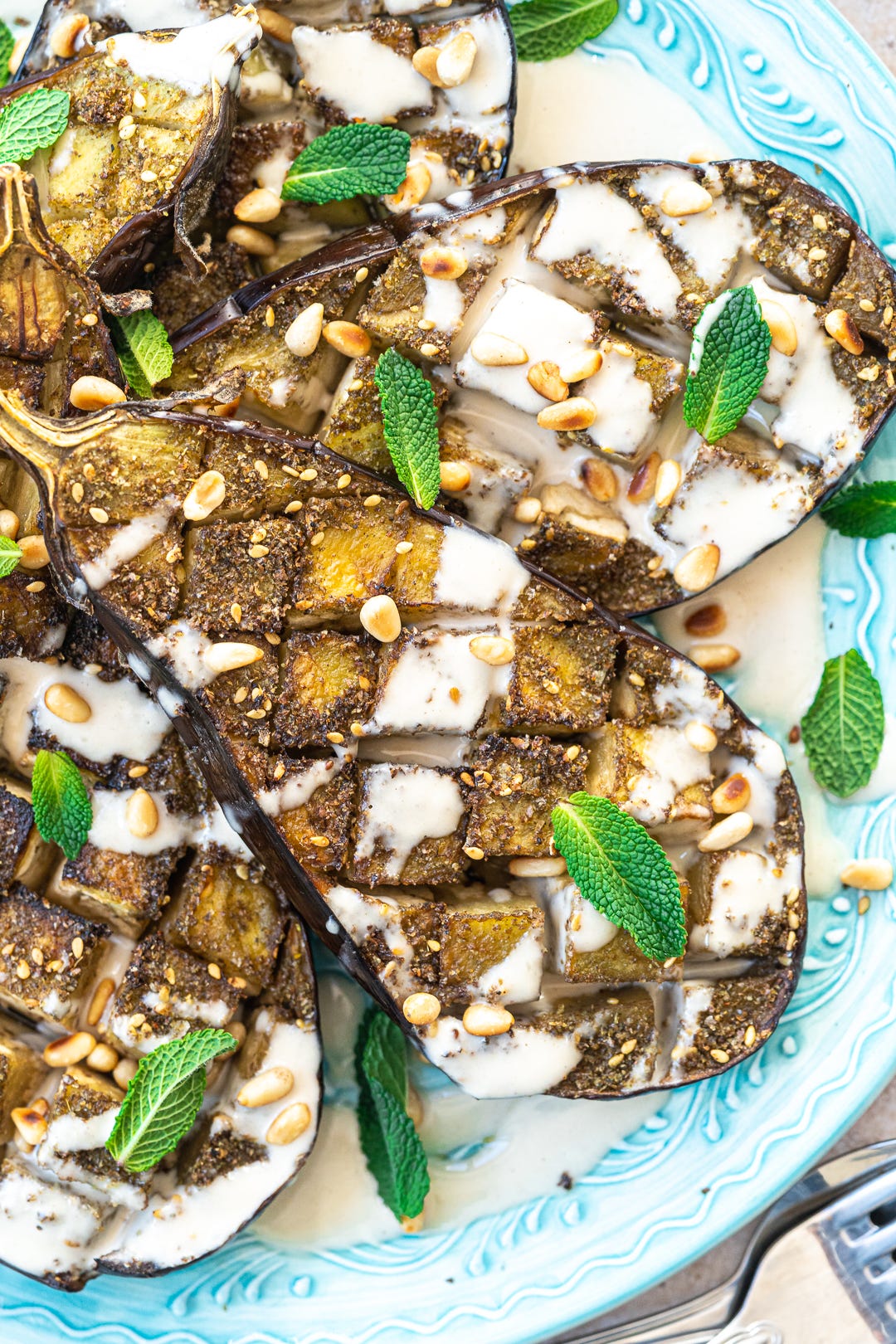Hi there! Happy Thursday 💚
If you’re new here, welcome! You joined our community of a very great moment, as we’re diving into the Middle Eastern cuisine this month of february.
So far, I shared a list of our 16 favorite recipes for you to try, I shared a hearty and delicious Butternut Squash Soup, and a fantastic Baharat Baked Rice recipe that some of you have already tried and loved!
Today, I’m going to be sharing all the ingredients I keep in my fridge and pantry to make most Middle Eastern recipes that we have on rotation at home.
Let me know what ingredients you would add to this list 🍋!
Fresh Ingredients in Middle Eastern Cuisine
At home, we love cooking Middle Eastern vegan recipes from all different countries. We are very lucky to live by the Mediterranean Sea, which makes it very easy to find most fresh fruits and vegetables used in this cuisine at the same time of the year. Also, having our own garden helps grow our vegetables to prepare these delicious dishes. Here are some fresh ingredients we normally have around to prepare most Middle Eastern recipes:
Fresh herbs. Parsley, mint, oregano, basil, rosemary, and sage are the fresh herbs we normally grow at home. Also, cilantro is often included in recipes from the Middle East, such as falafels.
Eggplants. You'll be surprised at how many recipes are made using eggplant. Maybe you already now the classic Baba Ganoush, but there are many more recipes where eggplants are the star of the dish! From stews, to moussaka, dips, pizzas, or flatbreads, once you immerse yourself in Arabic cuisine, you'll be using eggplant way more often than you think.
Tomatoes. Fresh tomatoes are one of the base ingredients in many recipes. You can also use canned tomatoes, but during the warmer months, when the tomatoes are ripening and juicy, I totally recommend using fresh tomatoes.
Onion, garlic, zucchini, cucumbers. All these are basic ingredients for many recipes, so if you want to start cooking more Middle Eastern recipes at home, you should try to have them in your fridge regularly.
Lemon. I feel so blessed to have a lemon tree giving me beautiful lemons all year round. I love making preserved lemons once a year to stock for the whole year. These are great to add to salads, tagines, or pasta dishes. Fresh lemon is commonly used in Middle Eastern dishes to add acidity.
Pomegranates, dates, figs. Totally worth getting during their season.
Pantry Ingredients in Middle Eastern Cuisine
To prepare Middle Eastern Vegan Recipes at home, these are the pantry staples that will make your cooking time easier.
Pulses. Stock up on red lentils, chickpeas, and beans. These ingredients are great to add to your Middle Eastern dishes and also to make dips such as hummus or bean dips.
Grains. We get rice, couscous, quinoa, and thin noodles when we go to our local Arabian market.
Olive oil. Just like in Mediterranean cuisine, you'll need olive oil as the base of most recipes and to prepare your salad dressings.
Tahini. Tahini or sesame seed paste is used in many dishes to add creaminess and tanginess. We love making tahini sauce to serve with our Tagine or use it as salad dressings or even pasta sauces. You can find tahini in health food shops, larger supermarkets, or Middle Eastern shops.
Spices. Cumin, coriander, Za'atar, Sumac, smoked paprika, or cinnamon are some of the spices that we use the most when cooking these recipes.
Black olives. Salty and pitted black olives are just the perfect addition to your Middle Eastern recipes.
Dried fruits and nuts. Stock up on almonds, walnuts, pistachios, raisins, and dried apricots. They’re used in both sweet and savory dishes, from rice pilafs to stuffed dates.
Essential Middle Eastern Spices
Spices are the heart of Middle Eastern cooking, bringing warmth, depth, and complexity to dishes. Here are the must-have spices for your spice rack:
Cumin. Adds earthiness and warmth to dishes like falafel, lentil soup, and spiced rice. We also use cumin when cooking Indian or Asian recipes, so you’ll always find a way to use up your cumin!
Coriander. A slightly citrusy spice that enhances stews, dips, and roasted vegetables. At home, cumin and coriander always go together.
Za’atar. A Middle Eastern spice blend that we always have around. This is more of a herb blend normally containing oregano, marjoram, thyme, sesame seeds, sumac, cumin, and coriander. We use za’atar to marinate our veggies and season our soups and breads. It adds a great nutty and herby flavor to your dishes.
Sumac. A tangy, lemony spice that brightens up salads, grilled veggies, tagine, and dips. I discovered Sumac not long ago and it was such a great finding!
Smoked Paprika. Adds a deep, smoky flavor to stews, marinades, and roasted vegetables.
Cinnamon. Used in both sweet and savory dishes, I love how cinnamon adds that sweet note to our recipes, like this Lebanese rice.
Turmeric. Gives a golden hue and subtle bitterness to soups, stews, and rice dishes.
Aleppo Pepper. A mild chili with a sweet, smoky flavor, that we like adding to marinades, or to make chili oil.
With fresh ingredients, pantry staples, and essential spices in your kitchen, you’re ready to dive into the flavorful world of Middle Eastern vegan cuisine. Whether you’re making a hearty lentil soup, a creamy tahini dip, or a fragrant spiced rice dish, the possibilities are endless.
If you try any of these ingredients or spices in your cooking, let us know! We’d love to hear what you’re making in your kitchen. Also, you can reach out to me anytime for questions, advice, or recipe ideas! Im always happy to help you 💚🌿.
Happy Cooking!
Love,
Laura.







